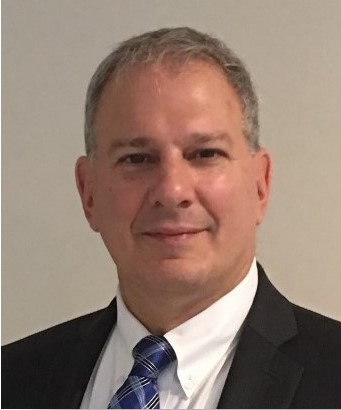SPEAKERS

DARSHAN DAVE - Founder, Principal, Reify Strategies
QUALITY ASSURANCE FOR THE EXPERIENCE ECONOMY
Welcome to the experience economy! For the quality assurance and testing community purely focused on technology, digital, and traditional testing, the experience economy poses newer challenges. The experience economy demands a radical and transformative approach that involves assurance of sentiments, empathy, experience, and trust.
These assurance aspects are often missed in a pureplay technology-based process and approaches.

LOUAY AL-JONDI - QA Manager, Nuance
IMPROVING THE TEST AUTOMATION FRAMEWORK AND BEST PRACTICES
An overview of automation best practices, techniques, frameworks, and tools that the QA team can use to increase test coverage and therefore improve product quality.
Automation and testing best practices using Azure DevOps tools. Why and what?
- View the best practices of test coverage and code coverage
- Appreciate the benefit of migrating test management tools to Azure DevOps that help improve the CI/CD process, with some lessons learned
- Get the value of reporting clear results, where and how?
- Experience using the right automation tools can play a key role in improving productivity, accelerating speed, and boosting team confidence.

YAO HONG KOK - Senior QA Engineer, MathWorks
WRITING RELIABLE, FLEXIBLE AUTOMATED GUI TEST
Browser GUI Integration Tests are notorious to be flaky and unreliable. This is not true and we can write reliable and flexible Browser GUI Integration Tests.
To explore how we can write reliable and flexible Browser GUI Integration Tests, he will touch on the topics:
- Why is it important that GUI Integration Tests are reliable and flexible?
- What are the causes of unreliable GUI Integration Tests?
- 5 solutions to improve reliability and flexibility are:
- Converting complicated GUI Integration Tests to GUI Unit Tests.
- Use Node.js and Puppeteer to write GUI Tests.
- Adopt Good GUI Integration Test Code Architecture. We proposed an architecture known as Model, Workflow & Test (MWT).
- Employ retries in test code.
- Parameterized test suite to work with multiple environments

ANTHONY VENDITTI - Senior Manager: Test Automation and Performance Testing, Advantasure
ADVANCED TEST AUTOMATION
Advanced Test Automation - using Selenium and other open source tools to build powerful test automation suites.
Tony Venditti is a test automation expert who has developed and implemented several test automation solutions for companies such as IBM, Fidelity Investments, and Blue Cross Blue Shield among many others in his career. He is passionate about software testing, especially test automation.
Tony will give a brief history of test automation processes and tools he and his team have used and implemented in the past and the approach he employs today. He will explain how you can integrate a series of open source tools to provide a seamless process for test automation development, execution, and result in analysis that can be utilized for just about any software application.
Tony will also discuss how to organize your teams to efficiently address test automation requests and requirements. Tony will speak about what he thinks test automation will look like in the near and distant future.

GEORGE HAMBLEN - QA Management Consultant, Procom
THE POWER OF SYNTHETIC TEST DATA
Having enough accurate data in testing is imperative. The speed of agile and DevOps require data to be available on day 1. At the same time production, data cannot be used and, privacy is paramount.
Synthetic data is the fastest way to accomplish your testing mission. This talk will give an overview of test data history, and explain how to leverage synthetic data for your manual, automation, and performance testing needs. This will be done by showing how it can be done with the GenRocket platform.

STEVE HALZEL - Executive Consultant, Acrelic Group
ACCELERATING YOUR TEST AUTOMATION VELOCITY
Companies are expected to deliver software to the market at lightning speeds. The Software must perform and behave as Customers, the Industry, and humans expect. Test Automation is expected to not only keep pace with development but also exceed development velocity. Test Automation is expected to cover functional and non-functional areas including validating performance, scalability, security, durability, resiliency, and the list goes on.
Quality, Test Automation, and Continuous Testing can no longer be an afterthought. Companies must plan their continuous Testing Strategy and Quality Gates implementations into their DevOps pipelines. One of the most overlooked and under-planned aspects of developing test automation is designing and architecting the “ecosystem” or Test Automation Framework required to build consistent, scalable test automation that can supersede development velocity while generating repeatable results.
In this presentation, Steve will discuss the key ingredients and value of TAFs including his experience transforming his prior organization from waterfall to agile to fully automated DevOps pipelines.

STEVAN ZIVANOVIC - Test Architect, Breaking Through The Barriers
RAPID AND RELIABLE PERFORMANCE TESTING
This presentation is based on his first-hand experiences in developing and operating a performance testing facility for a large-scale program. The context to this is an organization that has aspirations to move to DevOps, with a mixed approach to testing and with the challenges of how to structure technical testing, particularly performance testing. We will explore the journey on how to implement performance testing, such that it runs every day, multiple times a day, and is now a mandatory step to releasing changes. The presentation will investigate the following key areas :
- Build the system under test
- Test tools
- Structuring teams
- Running a test
- Evolving into a fully automated system

CHRISTINE BIRD - Vice President, Quality Management, Brown Brothers Harriman
DEVOPS FRIEND OR FOE-GETTING AUTOMATION SCRIPTS INTO PRODUCTION
Test automation is not just for test environments. If you can get valuable scripts into production you are saving many people their weekends and offer stability and successful production deployments! But how to get them to production? Does DevOps want your scripts in production and what is a process involving security, DevOps, business, and scripting to get it there? How much time are groups spending in validating the production code deployment and how can automation reduce it?